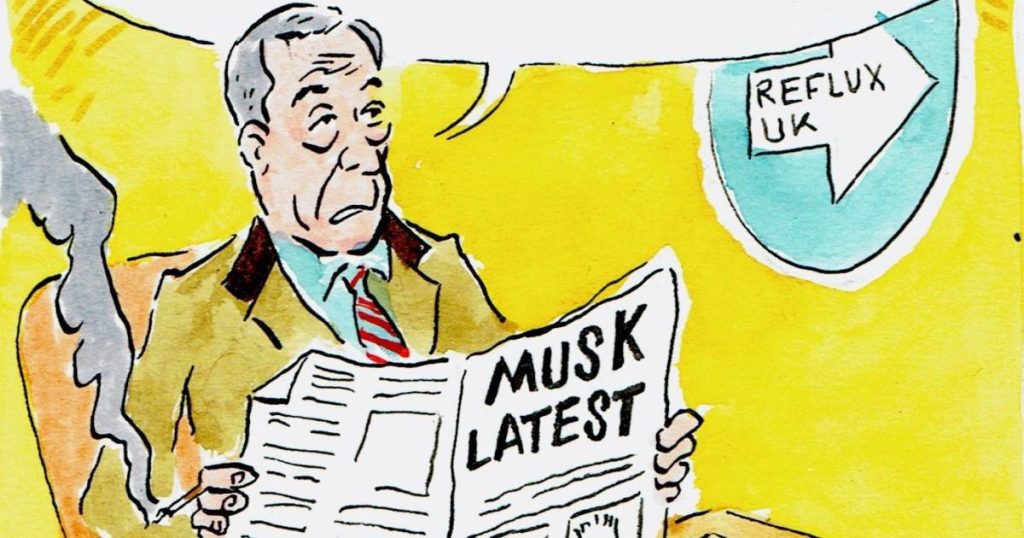This prompt presents a unique challenge: summarizing extremely limited content to a much larger word count. Since the provided content only mentions a cartoon and instructions for ordering a print, there isn’t substantial information to create a 2000-word summary in any traditional sense. Instead, we must interpret the prompt creatively, perhaps exploring the potential subject matter of the missing cartoon, the context of its publication, the implications of the offered printing service, and the broader world of single-panel cartoons as a form of media.
Let’s assume the cartoon is a contemporary commentary on a current event. Newspapers often utilize single-panel cartoons to offer a satirical or humorous take on complex issues, distilling the essence of a story down to a visually digestible image and a punchline. Given the lack of specific information, the subject matter could range from political debates and economic trends to social phenomena and technological advancements. If the cartoon were published during an election cycle, it might depict candidates in a comical light, highlighting their strengths, weaknesses, or campaign promises. Alternatively, it could focus on an ongoing social issue, using satire to expose hypocrisy or challenge prevailing viewpoints. Even the seemingly mundane, like a local traffic jam or a sudden weather change, could become fodder for a witty cartoonist’s observation.
The fact that the publication offers printing services suggests a physical newspaper, likely a local or regional one. These publications often have a strong connection to their communities, reflecting local concerns and interests in their content. The provided phone number likely connects to a customer service representative, highlighting a personal touch in an increasingly digital world. This suggests a readership that values tangible media and direct interaction with the publication. The act of ordering a print signifies a desire to own a piece of the publication, perhaps to display the cartoon as a conversation starter or to preserve a moment in time. The price of the print, though not mentioned, likely reflects the cost of printing, handling, and postage, as well as the perceived value of the cartoon itself.
The medium of single-panel cartoons has a rich history, dating back centuries. From early political caricatures to modern-day webcomics, these concise visual narratives have served as powerful tools for commentary, criticism, and entertainment. Their simplicity belies their complexity, as they often convey profound messages with just a few lines and well-placed words. The effectiveness of a single-panel cartoon relies on the artist’s ability to capture the essence of a situation with both wit and visual clarity. A skillful cartoonist can distill complex information into a single image, making it easily accessible and memorable for a wide audience. The humor in these cartoons can range from subtle irony to slapstick comedy, depending on the artist’s style and the intended message.
The process of creating a single-panel cartoon often involves brainstorming ideas, sketching rough drafts, refining the artwork, and adding text. The cartoonist must consider the composition, perspective, and use of symbols to effectively communicate their message. The choice of characters, background, and props can all contribute to the overall meaning of the cartoon. The text, whether in the form of dialogue balloons, captions, or labels, plays a crucial role in delivering the punchline or providing context to the image. The interplay between the visual and textual elements is what makes a single-panel cartoon a unique and engaging form of communication.
The act of ordering a print of a cartoon suggests a deeper appreciation for the artist’s work and the message it conveys. It transforms the ephemeral nature of a daily newspaper into a tangible keepsake. The printed cartoon can become a conversation starter, a source of amusement, or a reminder of a specific event or issue. It can be displayed on a refrigerator door, a bulletin board, or even framed and hung on a wall, transforming a fleeting moment of humor into a lasting piece of art. The decision to order a print also supports the publication and the cartoonist, encouraging them to continue creating thought-provoking and entertaining work.
In conclusion, while we lack the specific content of the cartoon, the provided information allows us to explore the potential contexts and implications surrounding its existence. From speculating on the subject matter to examining the role of physical newspapers and the rich history of single-panel cartoons, we can appreciate the potential power of this seemingly simple medium. The act of ordering a print signifies not only a desire to own a piece of the publication but also a recognition of the value of visual storytelling and the impact a single image can have.


